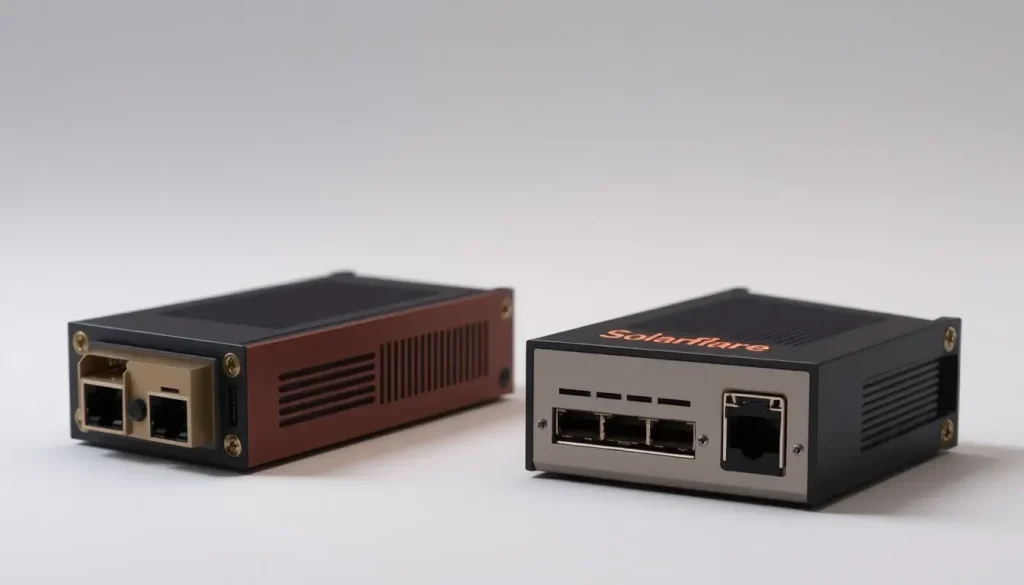AMD Solarflare X4 NICs Released for Low Latency Trading

In the rapidly evolving landscape of low latency trading, every microsecond counts. For traders, the right network interface cards (NICs) can mean the difference between profit and loss. Enter AMD's latest innovation: the Solarflare X4 series of NICs, engineered specifically for the high-stakes world of trading where speed and efficiency are paramount.
These new NICs are not just another addition to AMD's portfolio; they represent a significant leap forward in technology tailored for financial markets. Let’s explore the intricate details of the AMD Solarflare X4, its unique features, and the broader implications of its launch.
Understanding the AMD Solarflare X4 NICs
The AMD Solarflare X4 series has been designed with a clear focus on delivering low latency performance for trading applications. While these NICs may not boast the highest throughput metrics available on the market, they excel in environments where every nanosecond of latency can incur substantial costs for trading firms.
Two distinct models comprise the X4 series:
- AMD Solarflare X4522: This model features dual SFP56 ports capable of achieving speeds up to 50GbE. It is optimized for environments requiring reliable, fast connections.
- AMD Solarflare X4542: This variant includes dual QSFP56 ports, enabling speeds of up to 100GbE per port, making it suitable for the most demanding trading scenarios.
The Role of CTPIO Technology
A noteworthy aspect of the Solarflare X4 NICs is their incorporation of CTPIO (Cut Through Programmed Input Output) technology. This innovative feature allows data packets to start transmission before they have fully traversed the PCIe bus, effectively reducing latency and enhancing throughput efficiency.
This cut-through capability is particularly advantageous in trading environments, where the speed of data transmission can directly impact trading success. By minimizing the time taken for packets to be processed, the Solarflare X4 NICs position themselves as a vital tool for traders seeking an edge in a competitive market.
Target Audience: High-Frequency Trading Firms
Although Solarflare NICs may not fit the traditional mold of enterprise networking hardware, their design and functionality cater specifically to the high-frequency trading (HFT) community. The demand for ultra-low latency solutions in this sector has surged as firms aim to capitalize on minute market fluctuations.
Key features that appeal to HFT firms include:
- Minimized latency: Each microsecond saved can translate into millions in profit.
- Reliability and robustness: Designed to handle the rigorous demands of financial markets.
- Scalability: Supporting various speed configurations to adapt to evolving market needs.
A Brief History of Solarflare and its Acquisition
Solarflare has been a significant player in the NIC market, especially within the realm of financial trading since the early 2010s. The company’s focus on latency-optimized NICs positioned it as the go-to choice for many trading firms. In 2019, Solarflare was acquired by Xilinx, which sought to enhance its SmartNIC capabilities. Subsequently, AMD completed its acquisition of Xilinx, integrating Solarflare's advanced NIC technology into its offerings.
AMD has had a variety of NIC intellectual property (IP) in its arsenal for years. Historically, its NICs, such as those integrated into the EPYC processors, offered basic networking capabilities but lacked the advanced features found in Solarflare products. This acquisition has allowed AMD to significantly upgrade its NIC offerings, providing advanced solutions that cater to a broader range of industries, particularly financial trading.
The Broader Context of AMD’s NIC Strategy
AMD's entry into the NIC market through Solarflare is part of a larger strategy to expand its influence in the data center and cloud infrastructure sectors. With the acquisition of Pensando, a company focused on distributed processing units (DPUs) for AI and hyper-scale environments, AMD has positioned itself at the forefront of networking technologies.
This dual strategy of leveraging both Solarflare's low-latency NIC capabilities and Pensando's advanced DPU technology enables AMD to offer comprehensive solutions that address a myriad of networking needs across various industries.
Comparative Analysis: AMD vs. Competitors
When comparing AMD's Solarflare X4 NICs to those of competitors, several distinctions emerge:
| Feature | AMD Solarflare X4 | Competitor NICs |
|---|---|---|
| Latency Optimization | Yes, with CTPIO | Varies, often less emphasis |
| Speed Options | 50GbE and 100GbE | Up to 200GbE |
| Target Market | High-Frequency Trading | General Enterprise Use |
The Future of AMD Solarflare NICs
The launch of the Solarflare X4 series is just the beginning for AMD in the NIC landscape. As they roll out these products, there is significant potential for further innovation and integration of advanced features tailored to the evolving needs of the financial sector.
AMD aims to solidify its position in the market by continuing to enhance the performance and capabilities of its NICs. As financial markets become increasingly competitive, the demand for high-performance networking solutions will only grow, paving the way for continued advancements from AMD.




Leave a Reply